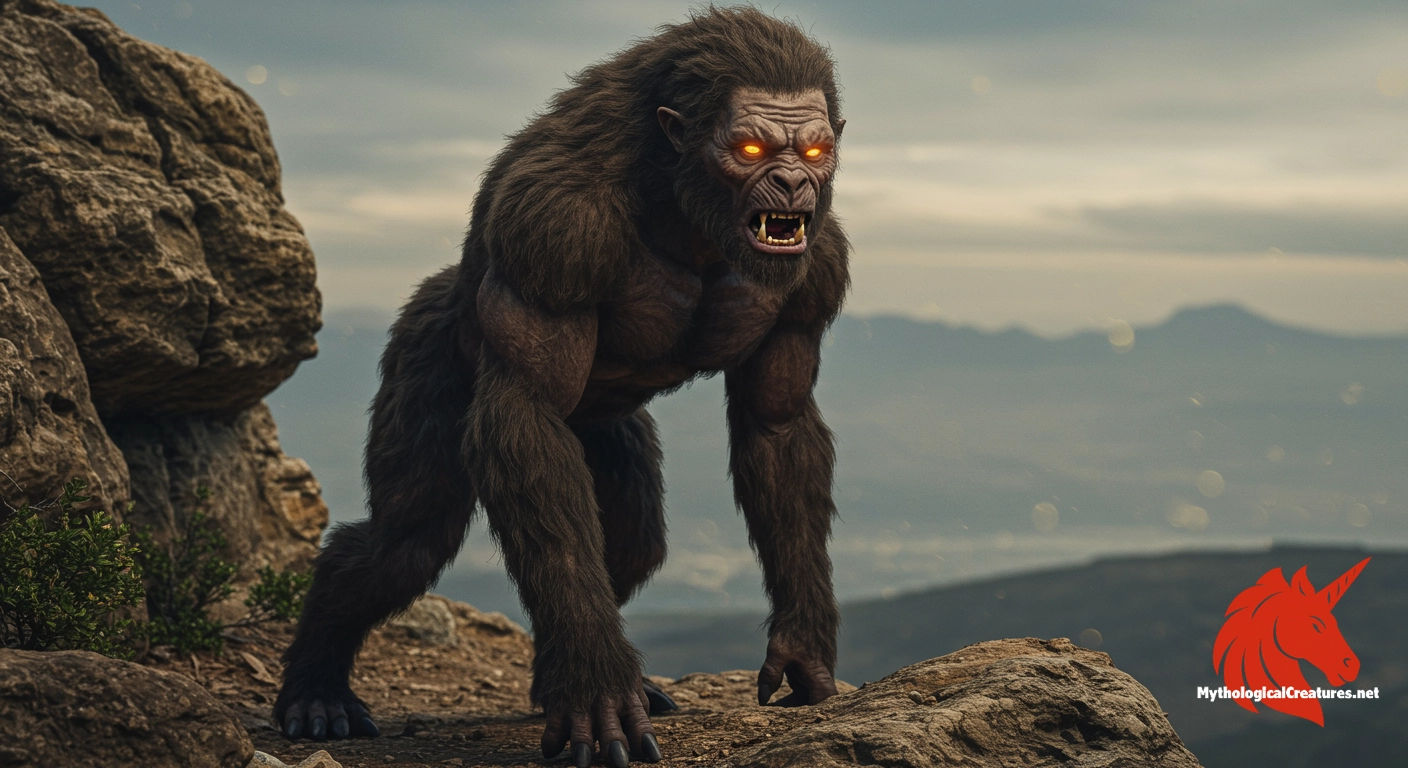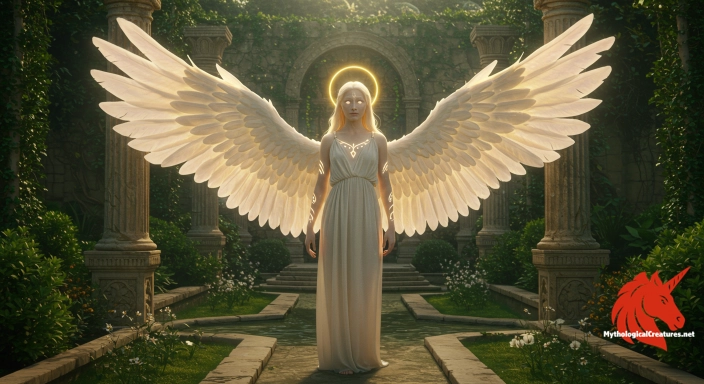Adnei haSadeh: Adnei haSadeh are legendary, human-like wild creatures mentioned in ancient Jewish texts.

Adnei haSadeh
Adnei haSadeh - Serves as a reminder of the primal forces of nature and the duality of human civilization versus the wilderness.
Origins & First Encounters
The Adnei haSadeh are enigmatic figures that have long captured the imagination due to their unusual blend of human and wild characteristics. They emerge from ancient Jewish texts at a time when myth, allegory and the unexplained coexisted in the written tradition. Their name, meaning 'human-like wild creatures', immediately suggests a liminal nature that challenges conventional categories of man and beast. Early accounts hint at origins steeped in the mysteries of nature and the raw forces of the wilderness. These creatures appear to have occupied a symbolic space where the civilised world and the untamed realm converged. Their presence invites reflections on the dual aspects of humanity—rationality juxtaposed with instinctive wildness. Over the centuries, the Adnei haSadeh have come to represent both a cautionary reminder and a celebration of the untamable spirit within all creatures. The fascination with them reflects a broader cultural context where the boundaries between the domesticated and the natural remain perpetually in flux. In literary and mystical traditions, they stand as a testament to the enduring allure of that which is both known and unknowable.
Source Texts & Tale Variants
Ancient Jewish literature provides the primary, albeit fragmentary, evidence for the existence of the Adnei haSadeh. Various texts reference these mysterious beings in contexts that mix both literal and allegorical elements. Some accounts present them as elusive denizens of the wilderness with ambiguous moral bearings. Other narratives, woven into midrashic and mystical texts, imbue them with layers of symbolic meaning that extend beyond a mere physical presence. The scant references have led to varied interpretations over time, with storytellers and commentators adding their own nuances to the creature’s legend. A number of these sources depict encounters that are laden with portent, suggesting that the presence of such beings was meant to provoke both awe and caution. As the stories were transmitted orally and later recorded in written form, the details surrounding the Adnei haSadeh expanded and diverged. Despite the limited and sometimes contradictory details in these ancient records, the legacy of the creature has grown richer through layers of subsequent interpretation and regional adaptation. The evolution of these story variants continues to invite modern readers to piece together the fragments of an enduring myth.
Form & Powers
Descriptions of the Adnei haSadeh evoke an arresting image of a being caught between the human and the animal. They are often portrayed as towering figures with broad, sinewy frames that speak of immense physical strength and endurance. Many accounts note the presence of a thick, patchy hair covering that blurs the line separating human skin from the natural hide of a beast. Their facial features tend to meld human expressiveness with primal savagery, featuring deep-set eyes and rugged contours that lend them an otherworldly appearance. Observers in the various texts remark upon their elongated limbs and an awkward yet purposeful gait that seems adapted to both the forest floor and the rocky wilderness. The hands described in some accounts are unusually large and powerful, suggesting a capability for both delicate manipulation and brute force. In certain texts, these creatures are alluded to as varying in stature, sometimes towering above ordinary men while at other times appearing more modest in scale. Artistic depictions, whenever they appear, capture the tension of wild beauty and inherent danger that these figures embody. Overall, the elusive physicality of the Adnei haSadeh contributes to their reputation as both mysterious and formidable figures in the mythic landscape.
Regional Faces
The portrayal of the Adnei haSadeh varies noticeably from one geographic and cultural context to another. In regions closer to the ancient lands of Israel, they are frequently associated with the stark, arid landscapes and dense, untamed groves that characterise the area. Among diaspora communities in Europe, aspects of the creature have intermingled with the familiar motif of the European wild man, resulting in a hybrid image that blends local legend with ancient Jewish myth. In these settings, they are sometimes depicted as solitary figures wandering the margins of civilised society. Other regional traditions have portrayed them as spectral guardians of natural boundaries, reflecting local concerns about encroachment and the loss of wilderness. Certain communities imbue the beings with additional mystical qualities, portraying them as hunters of spiritual or moral transgressions. Local artistic traditions have often adapted the Adnei haSadeh to reflect the prevailing aesthetics, from subtle caricatures in medieval manuscripts to more elaborate carvings in rustic altars. The variability in their depiction mirrors the broader human quest to interpret the wild in a manner that is reflective of local customs and environmental realities. This regional adaptability underscores how a single mythic figure can evolve to resonate with diverse communities over time.
Cultural Parallels
The legend of the Adnei haSadeh finds intriguing parallels in the mythologies of many different cultures. Much like the European wild man of medieval lore, they embody the tension between the refined norms of civilisation and the raw energies of the untamed natural world. Elements of their character can also be found in the archetype of wild, untamed figures in various Indigenous traditions and even in select interpretations of Greco-Roman mythological creatures. This inter-cultural commonality underlines a universal fascination with beings that defy the neat categorisation of human versus animal. In comparing the Adnei haSadeh with other such figures, one notices that both groups serve as symbolic bridges between the known and the mysterious. Their role often transcends mere physical description, instead offering a canvas on which societies project their deepest fears and aspirations. As each culture reinterprets such a motif, the creature gathers layers of meaning that reflect both the unique environmental influences and prevailing ethical currents of the time. Modern scholarship tends to view these parallels as part of a shared human impulse to confront and mythologise the wild within and without. Such cross-cultural comparisons enrich our understanding of how myth operates as a reflection of fundamental human concerns.
Legacy & Modern Evolution
The depiction of the Adnei haSadeh has undergone significant transformation from its earliest attestations to its place in modern cultural discourse. In the ancient texts, these creatures were wrapped in an aura of mystery, serving as embodiments of the untamable forces of nature and the complexities of human identity. Over time, their image has morphed to reflect evolving societal perceptions of wilderness, civilisation, and the boundaries between the two. In modern reinterpretations, the legacy of the Adnei haSadeh is often invoked in discussions about environmental degradation, the loss of untamed landscapes, and the clash between nature and urban sprawl. Contemporary art, literature, and film have embraced their enigmatic allure, frequently portraying them as symbols of both beauty and inherent peril. These modern depictions are as much about rediscovering a primal connection to the natural world as they are about critiquing modernity’s relentless march toward homogeneity. New narratives often imbue them with a sense of tragic nobility, reflecting an ongoing fascination with the idea of a wild, unrestrained spirit that both defies and enriches civilisation. As cultural icons, they continue to inspire a blend of admiration and apprehension, inviting audiences to question the value of what is lost in modern civilisation. The enduring appeal of the Adnei haSadeh is a testament to the power of myth to adapt and remain relevant across the ages.
Interesting Fact
A notable aspect of the Adnei haSadeh is their ambiguous nature, blurring the lines between human and beast and challenging perceptions of what it means to be 'civilized.'
Quick Creature Info
Origin:
Features:
Associations:
Our Mythic Legendary Rating:

Habitat:
Supernatural Powers:
Physical Attributes:
Abilities:
Behavior:
Lore:
Related Creatures, Tales or Lore
- WWild Man of the Woods
- YYeti
- SSasquatch
References
Discover Another Mythical Legend You May Not Have Heard Of?
Uncover the mysteries of ancient folklore and expand your knowledge of legendary beings from cultures around the world.
Dare to Meet the Jophiel....
Curated by the Mythological Creatures Team (rev. May 2025)
